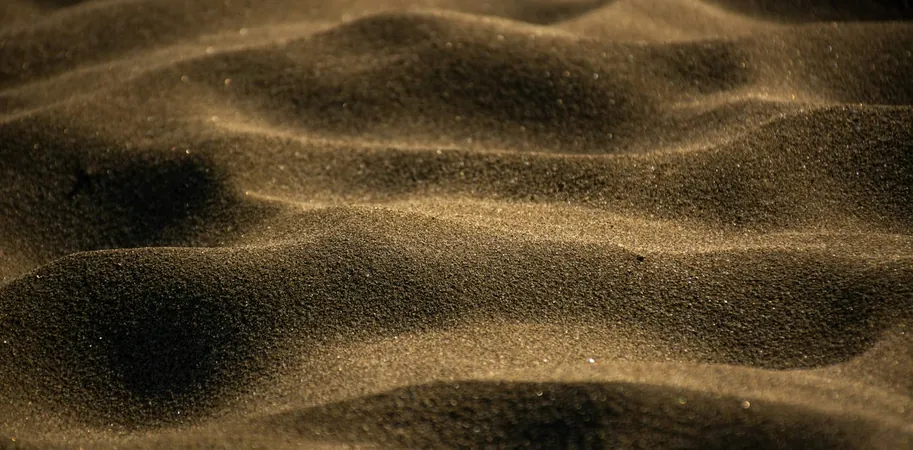
Scientists Unveil the 'Hidden Swirls' Transforming Our Understanding of Sand, Snow, and Rocks
2025-08-26
Author: Jia
A Groundbreaking Discovery in Granular Physics
Imagine sand, rocks, or snow appearing to flow calmly in one direction; beneath this seemingly simple movement, powerful swirling currents are at play. Recent research has uncovered these 'hidden swirls' that dramatically influence the flow of granular materials—shedding light on everything from avalanches to agricultural practices.
The Mechanics of Flow: Primary vs. Secondary Currents
In landslides, most grains follow a straightforward path downhill, termed the 'primary flow.' However, some grains take a detour, swirling sideways and following intricate patterns known as 'secondary flows.' These secondary flows are crucial as they subtly shape how far and fast materials travel.
Revolutionary Imaging Technique Reveals the Invisible
Despite theories about these hidden movements, they remained unobserved—until now. A pioneering study published in Nature Communications introduces a groundbreaking X-ray imaging technology that captures these elusive secondary flows in granular materials for the first time.
The Innovative Bulldozing Experiment
The concept of secondary flows has long been speculated but challenging to observe in action. Traditional methods like halting motion or introducing liquid have proven ineffective, as they disrupt the natural behavior of particles. To tackle this, researchers employed a unique bulldozing experiment, utilizing a conveyor belt to push glass beads into a wall, causing a pile-up.
Introducing DynamiX: The Game-Changing Imaging Tool
Through the innovative X-ray rheography method called DynamiX, researchers obtained three-dimensional images of these moving grains without interrupting their flow. Initial observations revealed ripples on the surface, hinting at the underlying secondary flows.
Mapping the Mysteries Beneath
To further decode the fluid dynamics at play, scientists devised a second X-ray technique to map the flowing heap's surface, linking the tiny ripples above with the swirling motion beneath. This led to groundbreaking findings—the first experimental proof of secondary flows.
General Implications for Natural Disasters and Industry
While direct implications for landslides were not tested, the findings suggest that secondary flows are a constant factor in various particle movements, from snow ploughing to agricultural grain handling. Understanding these swirls opens a new avenue for improving predictive models, potentially enhancing safety measures for landslide-prone areas.
A Broadening Horizon for Particle Behavior Modeling
The implications of these findings extend beyond just natural phenomena; they also promise to refine industrial processes like powder handling in pharmaceuticals and snow removal techniques. By highlighting the significance of secondary flows, this research lays a foundation for future advancements in the modeling of granular behavior.
Conclusion: Unraveling the Hidden Currents
This revolutionary work not only confirms that hidden swirling currents exist beneath the surface of granular flows but also emphasizes their critical role in shaping movement. Recognizing these dynamics is vital in understanding everything from deadly avalanches to efficient particle transport in various industries.


 Brasil (PT)
Brasil (PT)
 Canada (EN)
Canada (EN)
 Chile (ES)
Chile (ES)
 Česko (CS)
Česko (CS)
 대한민국 (KO)
대한민국 (KO)
 España (ES)
España (ES)
 France (FR)
France (FR)
 Hong Kong (EN)
Hong Kong (EN)
 Italia (IT)
Italia (IT)
 日本 (JA)
日本 (JA)
 Magyarország (HU)
Magyarország (HU)
 Norge (NO)
Norge (NO)
 Polska (PL)
Polska (PL)
 Schweiz (DE)
Schweiz (DE)
 Singapore (EN)
Singapore (EN)
 Sverige (SV)
Sverige (SV)
 Suomi (FI)
Suomi (FI)
 Türkiye (TR)
Türkiye (TR)
 الإمارات العربية المتحدة (AR)
الإمارات العربية المتحدة (AR)